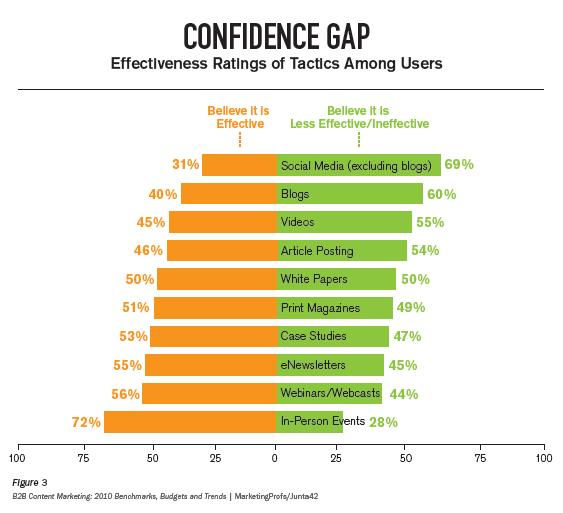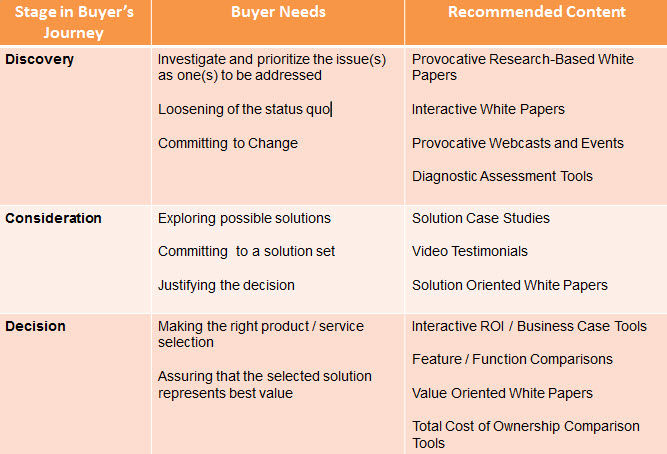Optimize Content Marketing by Facilitating the Buyer’s Journey
- Fahad H

- May 18, 2011
- 3 min read
Content marketing accounts for more than 26 percent of total marketing budgets annually, according to research from Junta42 and MarketingProfs that surveyed 1,100 marketers. What’s more, over 50 percent of survey respondents plan to increase their content marketing spend over the next 12 months.
However, even though budgets are growing, marketers have serious doubts about the return on investment, ROI, with only 41 percent indicating their content marketing efforts are effective.

Junta42 and MarketingProfs surveyed over 1,100 North American B2B marketers from diverse industries and a wide range of company sizes. The survey responses indicated a decided lack confidence in newer tactics like social media, blogs and videos, and even some more traditional tactics such as white papers and case studies.
Content marketing: A crises of confidence
Examining the sentiment in detail, 60 percent of respondents reported that efforts in new marketing channels such as social media and blogs are not effective, and over 50 percent indicated effectiveness doubts about more established content types, such as videos and white papers. Even print magazines, case studies, eNewsletters and webcasts are considered not effective for more than 40 percent of respondents.
These survey results clearly prove we’re facing a crisis in confidence in content marketing.
One of the reasons for the crisis in confidence is that content marketing success is measured by how much content is produced and distributed in the shortest amount of time instead of how effective it is at facilitating sales. As content continues to proliferate, relevancy to buyers is often lost in the mix as buyers become overwhelmed by the sheer volume that needs to be weeded through.
According to IDG Connect’s IT Buyer Survey, current content marketing strategies are producing too much content that is not relevant to buyers. In my post last week, I shared several ways to make content more relevant. This week, I’ll give you specific ideas on how to achieve relevance by aligning content to the buyer’s journey.
Content marketing and the buyer’s journey
The buyer’s journey includes several different steps:

Discovery: In the first step, buyers have to realize they have an issue they want to change. The pain point needs to be recognized and prioritized, and the existing status quo needs to be loosened for the process to proceed.
Consideration: Once the buyer has committed to a change, the buyer explores potential options and then commits to a solution set (but not necessarily to a single provider). The selected solution set, especially in today’s frugal times, needs to be justified, providing stakeholders and executives with a quantification of key financial indicators that the project is worthy of investment, including bottom-line impacts, investment requirements and ROI.
Decision: Once the solution is justified, the provider needs to be selected. With buyers so frugal, the lowest purchase price is a dominant criterion for selection. However, this may not deliver the lowest total cost over the useful life of the product / service, may require risks or may not deliver all of the expected benefits. In the final selection phase, the best overall value is selected.
With content now having a specific purpose, aligned to facilitate each step, the overall amount of content needed can often be substantially reduced, relevancy improved and effectiveness assured.
Facilitating the buyer’s journey
Across the buyer’s journey, different branded content tools can help facilitate a buyer’s decisions. The tools also can help sales better connect, engage and sell using this content. The more aligned the tools are to helping the buyer through the journey, the better.
Across the buyer’s journey, the recommended branded content and tools include:

The following is a recommendation for specific content to address the buyer’s needs at each step in the buyer’s journey:

The bottom-line
Content marketing is a significant investment, yet most marketers have little faith that their content marketing strategies are effective. Marketers often measure content marketing success “by the pound,” yet buyers, already suffering from information overload, want only the right information at the right time.
Marketers who map content to the buyer’s journey can help reduce the amount of content that is produced to just the relevant content needed to facilitate purchase decisions. This enables buyers to make better / quicker decisions and sales to leverage content to engage earlier and more effectively.
Want to learn other ways to take content your content marketing to the next level? View my recent webcast with Joe Pulizzi to find out whether your current B2B content marketing investments are optimized and how these efforts compare to your peers and best practice leaders.








Comments